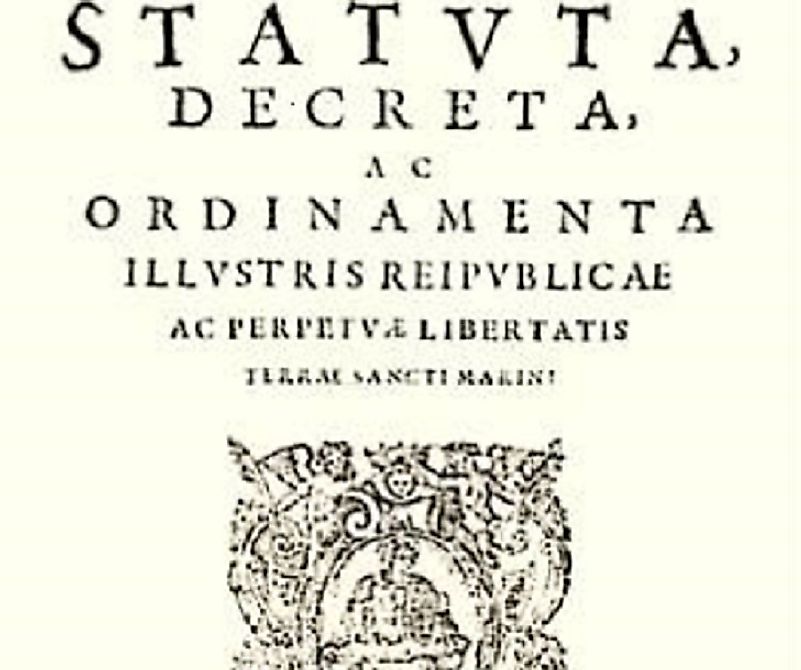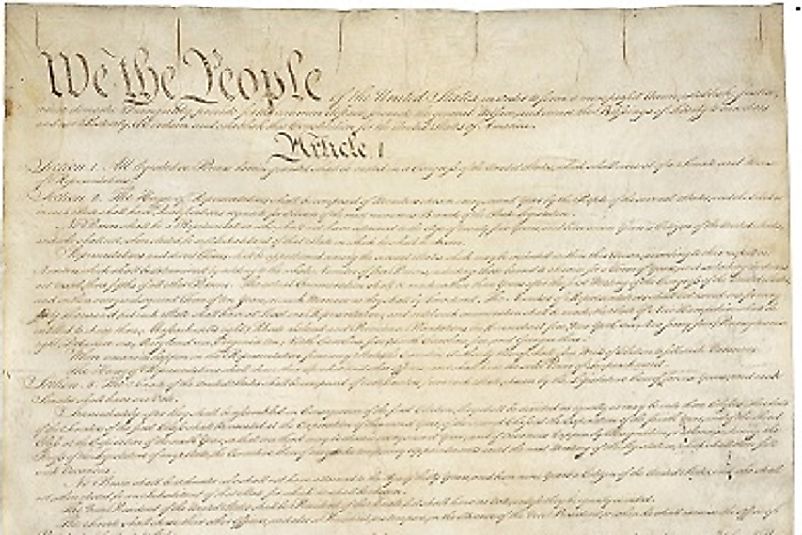Oldest Constitutions Still Being Used Today

10. Australia (January, 1901)
The Australian Constitution is one of the oldest in the world, and was drafted throughout the 1890’s in a series of constitutional conventions held during that period. In 1900, the British Parliament approved the final draft of the Constitution. Finally, the Australian Constitution came into effect on the 1st of January, 1901. It provides the legal framework for the country’s governance, and dictates the composition and functioning of the Australian Parliament, and its powers and roles.
9. Tonga (November, 1875)
The Constitution of Tonga, a Polynesian sovereign state and archipelago, was enacted on the 4th of November, 1875, by King Geogre Tupoi I. The constitution denotes the composition of the Tongan Government as being a constitutional monarchy, and sets forth the responsibilities of its executive, legislative, and judicial branches.
8. Luxembourg (October, 1868)
After the Independence of Luxembourg in 1839 from neighboring European powers Belgium and the Netherlands, the country’s Constitution was first drafted in 1841, followed by two other Constitutions in 1848 and 1856. The final, and currently accepted, version of the Constitution of Luxembourg came into effect on the 17th of October, 1868. This is one of the examples of a rigid constitution with less opportunities for amendment than ordinary laws. 13 chapters and 121 articles comprise the Constitution of Luxembourg, and these dictates the rights and responsibilities of the State and its citizens.
7. Argentina (May, 1853)
May 1st, 1853, marked an important day in the history of Argentina, as the Constitution of this Latin American country came into effect on this same date. Over the next several decades, starting in 1860, the Constitution underwent a series of amendments, with the final changes to date coming into force on the 24th of August, 1994. The Constitution establishes Argentina as a federal republic, and defines the role of its federal and local governments and their respective constituent parts.
6. Denmark (June, 1849)
After the downfall of absolutism in Denmark, the National Constitutional Assembly convened on the 23rd of October, 1848, to prepare a draft of Denmark’s Constitution. The Assembly was comprised by 38 members appointed by the King, and 114 other members who were appointed by those reputable members of the population who were older than 30 years of age and presided over independent households. The final Danish Constitution came into effect on the 5th of June, 1849, and established the country as a constitutional monarchy.
5. Belgium (February, 1831)
A year after Belgium’s independence from the Netherlands, the Belgian Constitution was adopted by its National Congress on the 7th of February, 1831. It established the country as a constitutional monarchy. A significant amendment to the Constitution was made on the 14th of July, 1993, transitioning Belgium's form of government from that of a constitutional monarchy to that of a federal state. The most recent amendments to the Belgian Constitution were made in 2012.
4. Norway (May, 1814)
After 434 years of a Danish-Norwegian monarchial union, Norway finally became its own sovereign state with the adoption of the Norwegian Constitution on the 17th of May, 1814. Three principles define the Constitution of Norway. Namely, these are the separation of powers, the establishment and protection of civil rights, and the sovereignty of the people and recognition of them as a peasant-free society in the country. Every year, the 17th of May is celebrated with great pomp throughout Norway, the date having been declared as the National Day of the country.
3. The Netherlands (March, 1814)
The Constitution of the Netherlands was adopted in March of 1814, and it declared the country as a hereditary monarchy with a parliamentary form of government. The national government of the monarchy is comprised by three institutions, these being the Monarch as the Dutch Head of State, and the Council of Ministers and the Parliament. The Constitution of the Netherlands also designates 12 provinces in the region. These regions are to be governed by a locally elected provincial council, with the Commissioner of the Queen (elected by the crown) as the formal head of each province.
2. United States (June, 1788)

The United States Constitution is one of the most well known constitutions in the world, and is the supreme law of the United States of America. It came into force in 1789, following its initial ratification in June of 1788. Since its implementation, the U.S. Constitution has been amended 27 times. The first 10 Amendments, collectively referred to as the "Bill of Rights", made provisions for protections of individual freedoms and met the need for equal justice, all the while curbing the powers of the government in certain cases. The majority of the remaining amendments have focused on the expansion and protection of civil rights. The Constitution of the United States is the shortest documented Constitution in the world, and has influenced the drafting of the constitutions of many other countries since then.
1. San Marino (October, 1600)
The Republic of San Marino is believed to have the oldest surviving Constitution in the world. However, instead of being a single document, the Constitution of San Marino is comprised by a series of six books written in Latin, collectively referred to as the "Statutes of 1600". These came into effect on the 8th of October, 1600. However, a number of historians and legal scholars abstain from recognizing the San Marino Constitution as the oldest, surviving national constitution in the world. They argue that the multiple texts that define the governance and laws of San Marino do not fall under the category of constitution. Meanwhile, the single text document serving as the Constitution of the United States does meet these stipulations, and therefore many consider it the oldest. However, the debate rages on, and so does the ambiguity of the definition of any given country's constitution. Besides the above mentioned constitutions, which are all codified or documented in writing, a number of countries, such as Saudi Arabia, Canada, New Zealand, and the United Kingdom, also have constitutions, albeit non-codified. These constitutions could possibly have been in effect since a long time ago, though the absence of documentation prohibits their mentioning in this list. Besides the codified and non-codified constitution debate, there is also the case of some constitutions, such as those of Taiwan and Kosovo, which remain unrecognized by many other nations.











